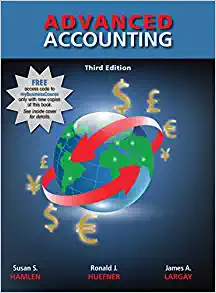Answered step by step
Verified Expert Solution
Question
1 Approved Answer
21. A system of bookkeeping whereby transactions are not analyzed in terms of debits and credits. Only a cash book summarizing receipts and disbursements is
21. A system of bookkeeping whereby transactions are not analyzed in terms of debits and credits. Only a cash book summarizing receipts and disbursements is used. This is known as a. Double-entry system c. Accrual basis b. Single-entry system d. Hybrid basis 22. The primary characteristic that distinguishes double-entry bookkeeping from single-entry is a. It recognizes the two-fold effect of each event affecting the enterprise b. A complete set of journals and ledgers is maintained c. A trial balance is periodically prepared d. Accrual basis accounting is used 23. An accounting device for accumulating increases and decreases relating to a particular accounting value such as an asset, a liability, etc. a. Account c. Journal b. Ledger d. Book of secondary entry 24. All of the following are disadvantages of the single-entry bookkeeping system except for the fact that a. Accounting records are incomplete. b. It is simple and less costly to apply. c. Internal control is inadequate d. Financial statements are not likely to be fairly presented in accordance with GAAP. 25.An entity acquired ordinary shares representing a passive interest. The investee's shares are listed on a stock exchange. Which of the following categories could this investment in equity shares be classified? a. Held to maturity b. Available for sale c. At fair value through profit or loss d. Either as available for sale or at fair value through profit or loss 27.An entity make an irrevocable election to present in other comprehensive income changes in fair value of a. An investment in equity instruments that is held for trading b. An investment in equity instruments that is not held for trading c. A financial asset measured at amortized cost d. A financial asset measured at fair value through profit or loss 28.If payment for an asset is deferred beyond normal credit terms, the difference between the total payment and cash price equivalent should be a. Considered interest expense of the current year b. Included as part of the asset cost c. Amortized as interest expense over the life of the asset d. Amortized as interest expense over the credit period 29.Which of the following statements best describes residual value? a. The estimated net amount currently obtainable if the asset is at the end of the useful life b. The present value of future cash flows to be derived from the asset c. The amount at which the asset could be exchanged d. The amount of cash that could currently be obtained by selling the asset in an orderly disposal 30.What is the theoretical basis of straight line depreciation? a. The operating efficiency of the asset decreases in later years b. Service value declines as a function of time rather than use c. Service value declines as a function of obsolescence rather than time d. Physical wear and tear are more important than economic obsolescence 31.The carrying amount of an existing old building demolished to make for the construction of a new building should be a. Accounted for a loss b. Capitalized as cost of the new building c. Charged to the land d. Charged to the new building if accounted for as inventory 32.Under the revaluation model in accounting for property, plant and equipment a. Assets must be revalued quarterly b. Asset must be revalued annually c. Asset must be revalued at the discretion of management d. There are no specific rules regarding the frequency of revaluation 33.A grant that becomes receivable as compensation for losses already incurred or for the purpose of giving immediate financial support should be recognized as income a. When received b. Of the period in which it becomes receivable c. Over 5 years using straight line d. Over 10 years using straight line 34. A company uses the allowance method for recognizing doubtful accounts. The entry to record the write off of a specific uncollectible account a. Affects neither net income nor working capital b. Affects neither net income nor accounts receivable c. Decreases both net income and working capital d. Decreases both net income and accounts receivable 35. When the allowance method of recognizing bad debt expense is used, the entries at the time of collection of an account previously written off would a. Decrease the allowance for doubtful accounts b. Increase net income c. Have no effect on the allowance for doubtful accounts d. Have no effect on net income 36. Theoretically, freight and warehousing costs incurred in the transfer of consigned goods from the consignor to the consignee should be considered a. An expense by the consignor c. Inventoriable by the consignor b. An expense by the consignee d. Inventoriable by the consignee 37. If a material amount of inventory has been ordered through a formal purchase contract at balance sheet date for future delivery at firm prices a. This fact must be disclosed b. Disclosure is required only if prices have declined since the date of the order c. Disclosure is required only if prices have since risen substantially. d. An appropriation of retained earnings is necessary
Step by Step Solution
There are 3 Steps involved in it
Step: 1

Get Instant Access to Expert-Tailored Solutions
See step-by-step solutions with expert insights and AI powered tools for academic success
Step: 2

Step: 3

Ace Your Homework with AI
Get the answers you need in no time with our AI-driven, step-by-step assistance
Get Started


